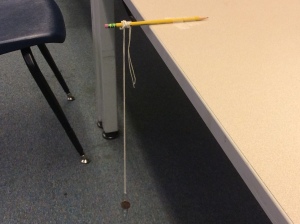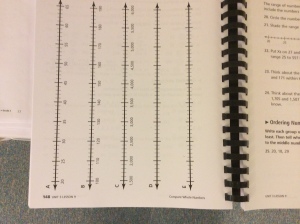P2 Practice differentiated instruction. This principle of HOPE indicates to me the need for awareness of and differences in how we approach teaching. Although the educational system has been set up like a conveyer belt through an assembly line, that doesn’t mean that it is an effective way to help students learn. Any student can benefit from having a teacher that recognize areas of concern and provide support for that student.
I observed a teacher going over a mid unit lesson which tied together a science unit (pendulums) with a writing lesson (how to create an outline). The students had already read the first page of an article and began their outlines. Here are some highlights from that observation:
The teacher writes on the whiteboard ‘How pendulums work’ (title) then asks the students how/where to find the title and why it’s important for an article. I thought he did a great class management technique when a student was off task and so he called on that student ‘Johnny, you have your math journal on your desk right now even though it’s reading and writing time, I noticed that your math journal is labeled ‘MATH’ – why did you label it like that? When Johnny responded (to help him find it in his desk drawer) the teacher tied it back into the lesson by saying ‘Exactly! That’s the same reason why we label our work; to help us identify it and look for it later. To know what you’re looking for, or help others find something you’ve worked on’. Many teachers tend to allow a distraction to turn into a time to pause the lesson, talk to the distracting student, then return to the lesson. This teacher after years of practice has formed an impressive style of instruction and classroom management that blends and seem effortless.
The teacher worked on creating differentiated instruction by working directly with the IEP students and having them pair up with a partner to help them get their outline finished. He also provided them with a copy of his finished outline to look at so they wouldn’t’ have problems with copying from the white board (far point gaze shifting).
The picture above is a sample of the pendulums made by the students earlier in the day. It is very basic and uses materials found in any classroom (pencil, tape, string, paperclip, and a penny). For the creation of the pendulums each of the IEP students were given the pendulum project in a slightly personalized way, one of our students has some fine motor skills so his pendulum already had the string tied on. One of our students gets frustrated really easily, so he was partnered with someone who follows directions and maintains an easy-going personality.
Classroom management was really effective, he managed to call on the person who was off task without embarrassing them, get them back on track, and refocus everybody back to the current issue. At one point though, he did put a stop to the lesson when there were several students who were off topic and he helped the whole group feel both responsible and like a team to help solve the problem.
(Teacher: “If you were the teacher what would you want to see students doing right now? (‘Talking at their table groups’), if you’re not talking with you’re group then you’re not helping the class. You’re working on something else and I don’t want to get to the end of this and have you not know how to write an outline. You need to work together at your table, help your table {each other}. If someone is off topic, help them focus and ask them a question”).
He also included a lot of information about the importance of helping your brain organize material by stressing the value of lining up an outline with spacing to help your brain.
This was basically a teacher presentation of material and no technology was used. I really like time I get to spend in this classroom and I think this teacher has really impressive classroom management. If I were doing this lesson I would begin by having the students read the learning target out loud, then do a turn-and-talk to discuss what they thought the lesson would be about. As well as make predictions on what they think will happen with their pendulums. Once the lesson was done, I’d ask a student to read the learning target once again and we would have a short discussion about if we met our learning target for the lesson.

